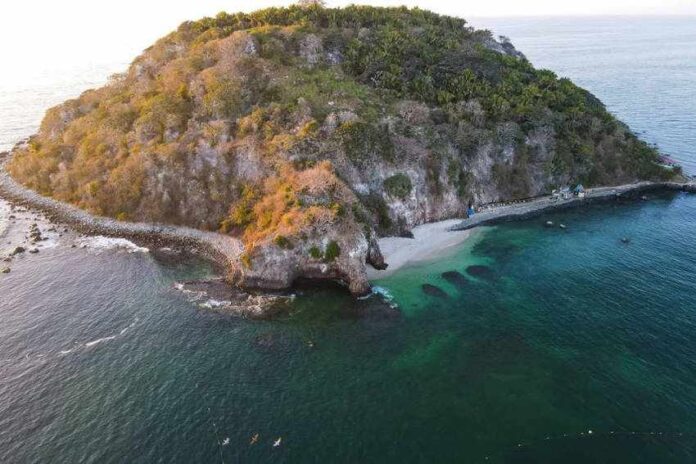We didn’t plan to leave Puerto Vallarta that morning.
It started as a lazy conversation over coffee. It had been a busy work week for me and my boyfriend Omar, and we found ourselves with a blank canvas of a day for the first time in quite a while. We live in Puerto Vallarta, and although we love its buzz, we were craving something quieter.
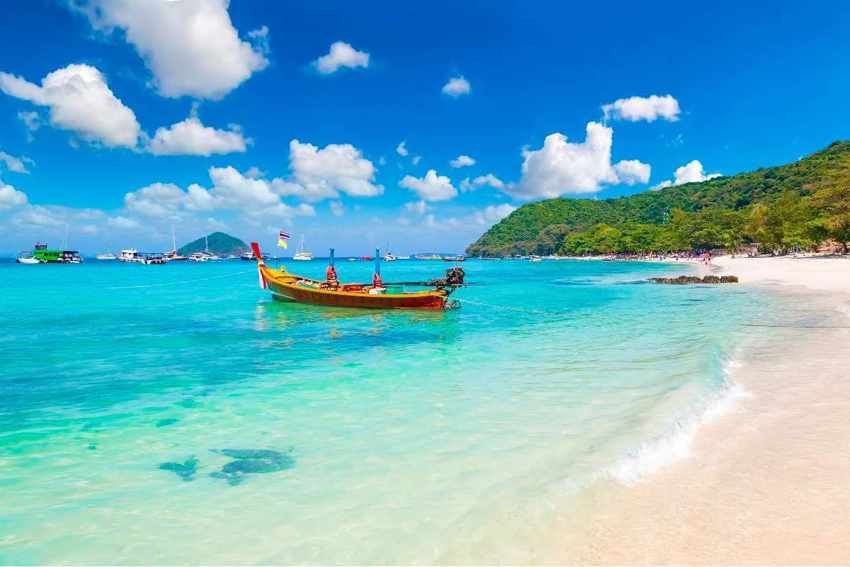
A quick search, a few reviews and one impulsive decision later, we were heading north to Isla del Coral, a little island just off the coast of Rincón de Guayabitos, Nayarit, a small beach town about an hour and a half away.
From Puerto Vallarta, Highway 200 snakes up the coastline, past jungle hills and with glimpses of the Pacific. The towns slipped by: Bucerías, Sayulita, San Francisco, each one tempting us in its own way, but we stayed the course.
The further north we drove, the more the landscape softened. There was less development and more green. More space.
We pulled into Guayabitos, parked, tossed our backpacks over our shoulders, grabbed our ice chest and walked straight toward the main square. A local vendor approached us with a warm smile and an offer: a 350-pesos, round-trip boat ride to Isla del Coral leaving at 10:30 a.m., which included snorkeling gear. Done! We could stay all day if we wanted, as boats shuttled visitors back and forth every half hour until the last one at 6 p.m.
We joined a small group of unknown fellow travelers and waited under a palm tree. Within minutes, we were stepping onto a panga, guided by a barefoot captain who looked as though he knew the waters better than anyone else around.
The ride was short, maybe 15 or 20 minutes, but exhilarating. The boat bounced over the waves, and little bits of local history were pointed out along the way. The air was filled with sea spray and the kind of laughter that only comes when you’re making friends with strangers.
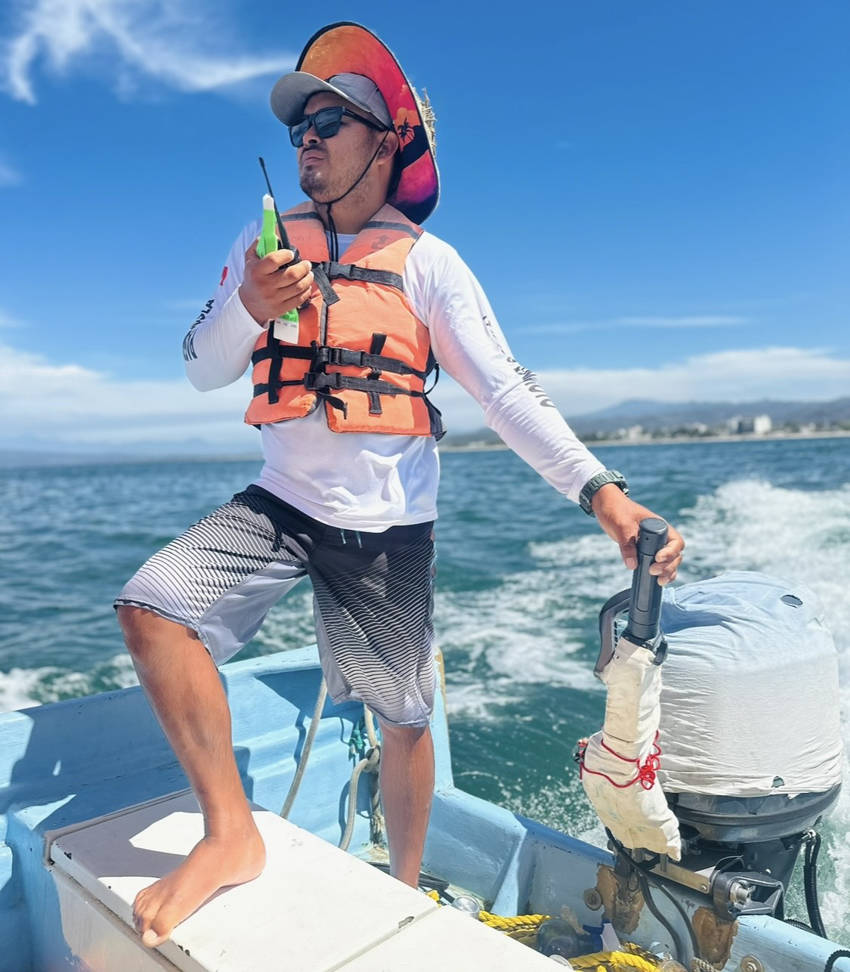
Ahead, Isla del Coral shone like something out of a forgotten postcard. A green hill was rising gently from the sea, rimmed by white sand and, much to my delight, crystal clear water.
The dock was old and rugged, so we followed our captain’s advice and used extra caution. We could see the soft beach lying ahead. There were no buildings other than a shack or two offering snacks and drinks, one tiny restaurant atop the hill and a few handmade palapas. We heard the sound of waves curling onto shore and knew we’d made the right choice for our day.
We found a spot with a table and umbrella to rent for 200 pesos and set down our things. Around us, families were settling in, couples were already snorkeling and a man nearby was chopping fresh mango with a machete. No one seemed in a rush, which seemed perfectly in keeping with the place. The island invited everyone to slow down.
The reef lay just offshore and was an easy swim, even for casual snorkelers like ourselves. We pulled on our masks and waded into the pristine water, stepping over stones until the sea lifted us into that familiar, floating rhythm.
Below the surface, fish darted between corals. There were flashes of yellow, silver and electric blue. We hovered, watching sea urchins tuck into crevices and following a school of butterfly fish flitting between shadows.
There’s something quietly magical about snorkeling. Maybe it’s the way time slows or the way your breath becomes the soundtrack. My boyfriend reached out once to point at a particularly flamboyant parrotfish. We floated there for a while, side by side, saying nothing, letting the ocean do all the talking.
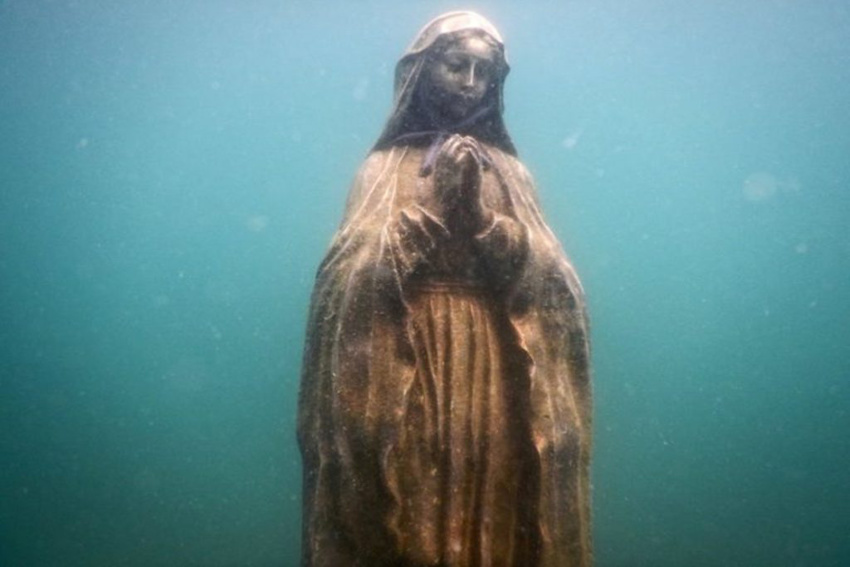
After an hour or so, hunger set in. We hadn’t packed much, just water and a couple of beers, but one of the shacks had a vendor selling ceviche de camarón being chilled in a cooler full of ice. We ordered two.
“80 pesos,” we were told. We ordered two more.
We sat, sandy and sun-warmed, eating ceviche with plastic forks, passing a bottle of water between us, and laughing at absolutely nothing.
After lunch, we wandered. Isla del Coral isn’t big. You can cross it in about 10 minutes, but it rewards curiosity. There are little paths that wind up into the brush, flat rocks that stretch into the sea and hidden coves.
We climbed a small ridge on the island’s back side and sat for a while looking out at the ocean. There were birds overhead, boats far in the distance and nothing else. No phone signal. No agenda. No reminders. It felt like disappearing together into a place outside of time.
By late afternoon, the light began to shift. The sun dropped lower, and the breeze picked up. It was a gentle signal that it was time to go. We were both a little sunburned but entirely content.
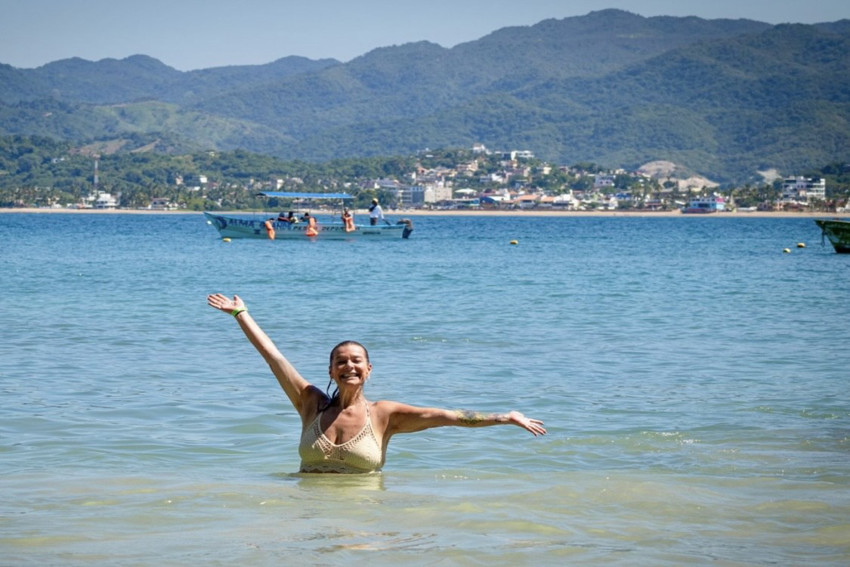
The panga ride back was quieter this time, as there was far less adrenaline and far more reflection. We held hands, leaned into the wind and watched the island shrink behind us.
Guayabitos looked golden in the late light. Its shoreline was dotted with umbrellas and locals finishing out the day. We rinsed our feet and hit the road back toward home.
It’s easy to fall in love with places like Isla del Coral — and not because they try to impress you, but because they don’t. They let you show up as you are, without expectations, and they give you exactly what you didn’t know you were looking for.
From Puerto Vallarta, this day trip is effortless. Just drive north and let the rest happen. You won’t need much more than a towel, some water, a few pesos and someone you like being quiet with. The island takes care of the rest.
In a region full of big experiences, Isla del Coral is something else entirely. It’s small, it’s slow and it’s utterly restorative.
It’s not loud. It’s not showy. It’s just quietly there, waiting.
Charlotte Smith is a writer and journalist based in Mexico. Her work focuses on travel, politics, and community. You can follow along with her travel stories at www.salsaandserendipity.com.
